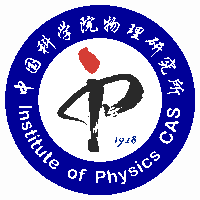Contribution of surface plasmon poaritons and quasi-cylindrical waves to the extraordinary optical transmission through subwavelength metallic hole arrays
4 July 2013. Invited by Prof. Xiulai Xu, Prof. Haitao Liu from Institute of Modern Optics,Nankai University visited us and gave a talk on "Contribution of surface plasmon polaritons and quasi-cylindrical waves to the extraordinary optical transmission through subwavelength metallic hole arrays".
Abstract: In this talk we introduce microscopic models of the extraordinary optical transmission (EOT) to identify the respective contributions of the SPP and of another surface wave, called quasi-cylindrical wave (QCW) to the EOT. In the model we first consider the SPP and neglect all other fields on the metal surface [1], so as to identify the pure contribution of SPP to EOT and to reconcile the previous debates on the role of SPP in EOT. Comparing the prediction of the pure-SPP model and the fully-vectorial calculations that automatically incorporate the total field on the metal surface, we find that the contribution of the SPP to EOT gradually decreases as the wavelength increases from the visible to infrared, while the contribution from another residual QCW gradually becomes dominant. Further analysis shows that this is due to the weaker excitation of SPPs but an almost constant excitation of QCWs with the increase of the wavelength. We then incorporate both the SPP and the QCW into the model [2], which shows perfect agreement with fully-vectorial results, confirming the fact the EOT is solely due to the contribution from the two surface waves and no other field needs to be considered. The validity of the model has been confirmed by recent experimental results [3]. In the experiment the transmittance of a set of hole arrays with various densities is measured in visible wavelength ranges and is well reproduced by the model. The model predicts a more dominant contribution of SPPs to the EOT for sparser array of holes, which is due to the longer propagation distance of the SPP than the QCW.
[1] H. T. Liu and P. Lalanne, “Microscopic theory of the extraordinary optical transmission,” Nature 452, 728-731 (2008).
[2] H. T. Liu and P. Lalanne, “Comprehensive microscopic model of the extraordinary optical transmission,” J. Opt. Soc. Am. A (Spotlight) 27, 2542-2550 (2010).
[3] F. van Beijnum, C. Retif, C. B. Smiet, H. T. Liu, P. Lalanne and M. P. van Exter, “Microscopic theory of the extraordinary optical transmission,” Nature 492, 411-414 (2012).
About Professor Haitao Liu:
刘海涛,南开大学现代光学研究所教授,博士生导师。清华大学工学学士,光学工程博士,法国CNRS光学研究所博士后。研究方向为微纳米光学,表面等离激元光学。以第一作者或通讯作者发表SCI期刊论文21篇(包括1篇Nature),SCI他引272次,合作发表SCI期刊论文12篇(包括1篇Nature,2篇Physical Review Letters),SCI他引144次。在国际学术会议作特邀报告5次。主持973计划项目课题等7项国家级和省部级项目。入选教育部“新世纪优秀人才支持计划”。天津市“131”创新型人才培养工程第一层次人选(最高层次)。获得了法中科学及应用基金会Gilles Kahn奖,中国仪器仪表学会金国藩奖学金,两次获得中国光学学会王大珩光学奖(分别为高校学生奖和中青年科技人员光学奖)。


